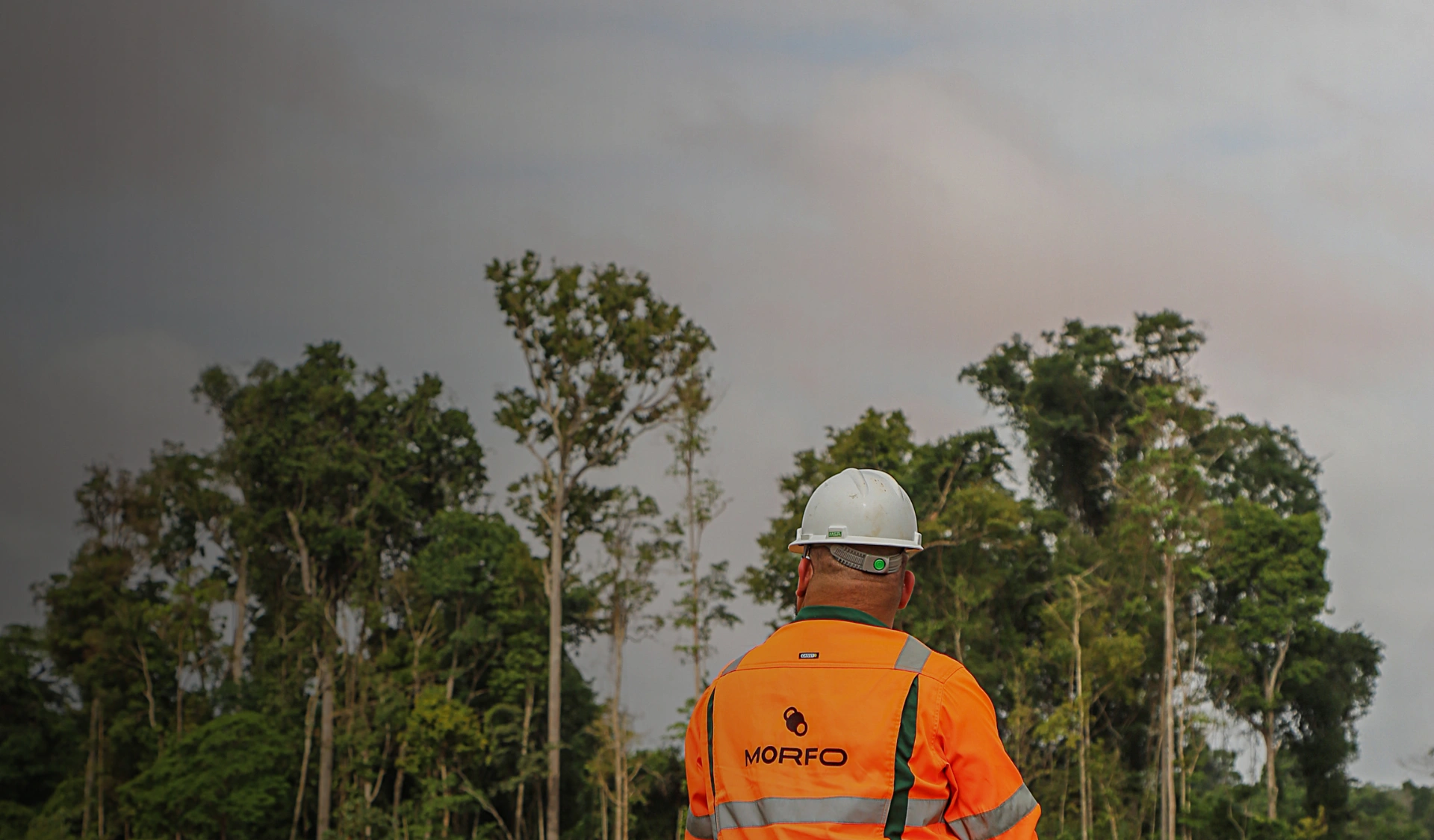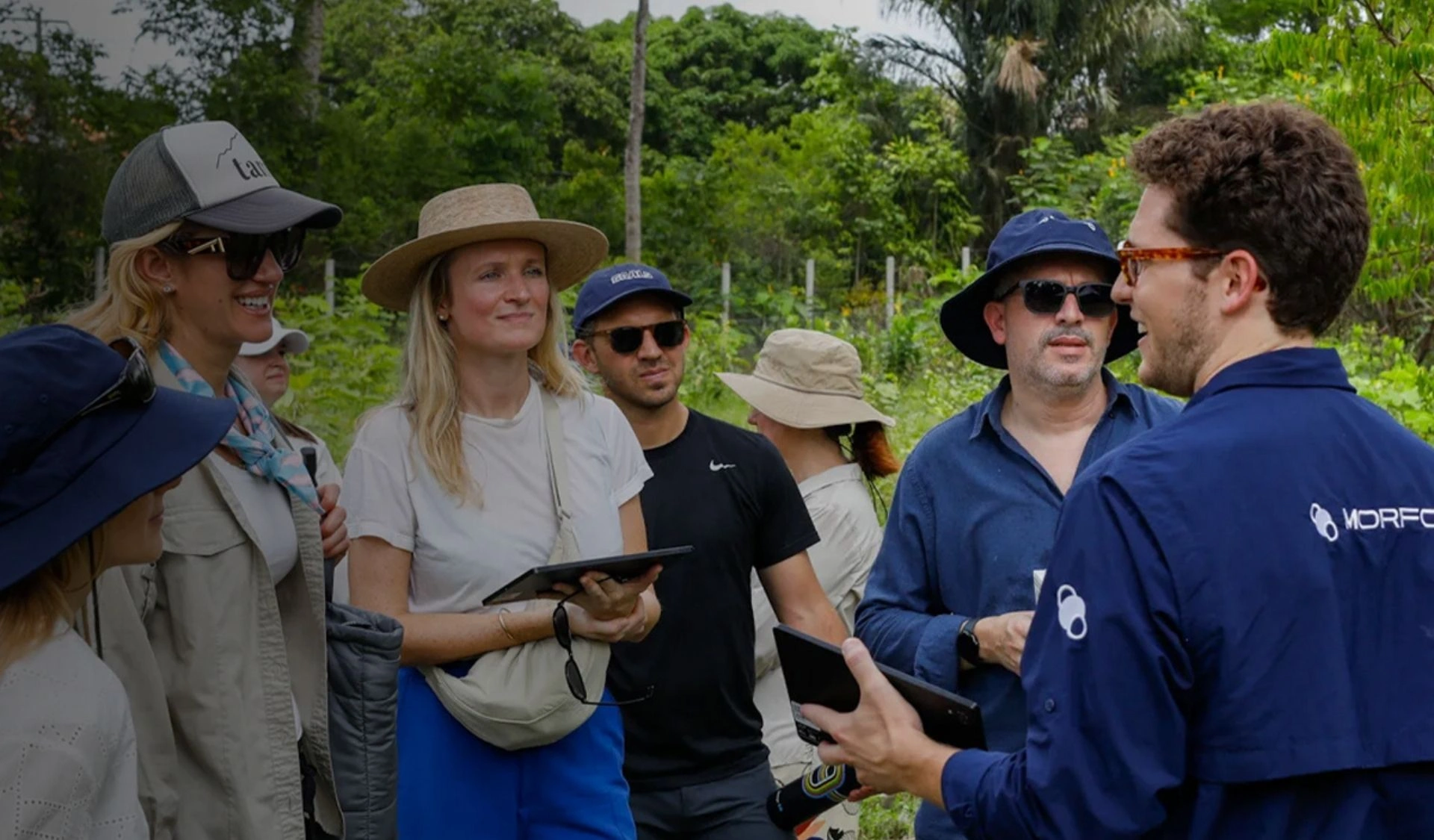The question of how to restore forest ecosystems is the subject of much debate. While some support the idea of allowing forests to regenerate naturally, this natural regeneration may prove insufficiently rapid in the face of the climate emergency.
That's why, at MORFO, we believe that pitting natural regeneration against reforestation is a mistake. In this article, we present the main arguments for using both methods, depending on the forest's level of development.
🦋 Why natural restoration and reforestation are complementary in 3 points:
The concept of ecological succession:
Ecological succession describes how a forest ecosystem progressively moves from one stage to another, following disturbance, whether natural or caused by human activity. To achieve the best results, natural restoration and reforestation must follow one another.
The inspiration of the Miyawaki method:
Following a process of natural regeneration, the Miyawaki method is a rapid forest restoration method, applicable everywhere, resulting in a dense forest where local species grow. Many reforestation players, including MORFO, use this method to reforest forests.
The benefits of reforestation:
While reforestation projects are inspired by a natural method, they are not carbon copies, since they bring other benefits.
Ecological succession of forests: understanding the different stages of forest growth
Ecological succession in forests is a process of growth and development that occurs over time in a given ecosystem. It describes how the ecosystem progressively moves from one stage to another, following disturbances, whether natural or man-made, such as fire, human activity, floods or radioactive disasters. Ecological succession is a complex, dynamic process influenced by factors such as climate, soil conditions, seed availability and interactions between different plant and animal species.
There are two main types of ecological succession within a forest:
Primary succession
Primary succession occurs in areas where there is no soil or organic matter, for example after a volcanic eruption or glacial retreat. The process begins with the colonization of pioneer and woody pioneer species, such as lichens and mosses, which can grow on bare rock. Over time, these organisms break down the rock and contribute to soil formation. As the soil develops, herbaceous plants and shrubs begin to establish themselves. Eventually, large trees, such as conifers and hardwoods, dominate the area.
Secondary succession
Secondary succession occurs in areas where soil and organic matter already exist, such as after a forest fire or human logging. In this case, the process begins with the growth of early successional species, which are generally fast-growing, short-lived plants. These species help stabilize the soil and create favorable conditions for the establishment of other plant species. Over time, the forest undergoes a series of changes as different species succeed one another. At the end of this process, the forest reaches a mature stage, called climax, which consists of climax vegetation, where a relatively stable and diversified ecosystem is established.
Did you know?
It's impossible to return the forest to its original state. We can only facilitate and accelerate the process of natural regeneration.
The graph below shows the six stages of forest succession, whether primary or secondary:
.png)
3 stages in which reforestation is necessary to accelerate the regeneration process
Of the 6 stages in the growth of a forest, reforestation is often used in only three, with the aim of accelerating growth. At MORFO, for example, we focus on the following three stages:
Step 3: Herbaceous perennials
This stage sees the growth of a diversity of grasses and legumes. Thanks to these fast-growing plants, life and animal species begin to reappear, and the ecosystem begins to recover. Improving soil and environmental conditions is part of the pre-planting preparation.
Stage 4: Pioneer species
In this stage, we help to establish pioneer tree species. This may involve the selective planting of pioneer trees. This stage is crucial to launching the forest base, since it plays the role of fixing it in place.
Step 5: Fast-growing tree species
In this final stage, we actively plant pioneer and fast-growing tree species to accelerate vegetation cover, while adjusting the density of ratios according to the forest's stage of development.

By restoring vegetation during stages 3, 4 and 5, we considerably speed up the forest regeneration process. By promoting the growth of perennial herbaceous plants, pioneer species and fast-growing tree species, we create an environment conducive to the establishment of the next and final stage of forest succession, stage 6. By allowing forest succession to follow its natural course after promoting the previous stages, the forest can evolve to be more resilient.
Did you know?
The ecosystem learns from past disturbances and develops resistance and regeneration mechanisms that make it stronger in the face of future natural disasters or anthropogenic disturbances. Understanding the ecological succession of forests is essential for their management and conservation, as it gives us information about the natural regeneration of forests and the species that are likely to occur at different stages. Now, we invite you to understand the most widely used natural restoration method: the Miyawaki method.
The Miyawaki method: a famous natural restoration method
The Miyawaki method, developed by Japanese botanist Akira Miyawaki, is a natural forest restoration method distinguished by its rapid growth and ability to restore biodiversity-rich forest ecosystems. The Miyawaki method has been widely used in many countries to restore degraded forest ecosystems, create urban green belts and combat deforestation.
The main characteristics of Miyawaki forests are :
- Natural vegetation and the use of native species. This method is based on identifying the vegetation that would naturally occur in an environment without human intervention. By observing similar primary forest ecosystems, species adapted to the region are selected. Only native plant species are used for planting.
- Rich biodiversity. These forests are made up of 20 to 30 different species, 70% of which are medium to large trees.
- High planting density. Trees are planted very close together (3 trees/m2), forming a dense forest.
- Rapid growth. As trees are planted densely, they quickly compete for light, accelerating their growth rate. This is called virtuous competition. But beware: virtuous competition can lead to a loss of biodiversity, as it may benefit only certain plants. There are many theoretical examples of this, but practice is sometimes more complex.
- Soil preparation. Before planting, the soil is prepared to recreate optimum conditions for tree growth. This preparation can include measures such as soil amendment, weed control and the addition of organic matter.
- High resilience. These forests are able to regulate themselves and maintain their functional equilibrium despite external constraints. Their density offers a superior capacity to capture water, as their microclimate is naturally humid and avoids evaporation of water from the ground.
- A mature forest in 20 years. On an uncultivated plot in a temperate climate, if nature is left to its own devices, it takes around 200 years for the vegetation to evolve into a mature forest. By selecting "climactic" species present at the climax stage, these forests mature in just 20 years.
- A method that can be applied to any type of soil, in any type of climate. The Miyawaki method can regenerate poor or uncultivated soils, improving their physico-chemical composition.
The Miyawaki method offers many advantages. We will now explain why reforestation is based on this natural method, particularly in the case of our MORFO company.
How are MORFO's forest ecosystem restorations similar to the Miyawaki method?
Opposing natural regeneration and reforestation is therefore doubly misleading. As we have seen, these methods are complementary, since they can be used at different stages in the reforestation process. But that's not all, since reforestation also draws on knowledge of natural restoration. And it does so on several levels:
- Accelerating natural regeneration. Like the Miyawaki method, MORFO focuses on the natural regeneration of forests. The natural reconstitution of forest ecosystems enables the growth of local, adapted and resistant flora. MORFO particularly targets areas with little to no degradation, or close to existing forests, which can serve as important seed sources.
- The use of efficient planting techniques. MORFO uses drones to plant capsules containing selected tree seeds. This method enables rapid, large-scale reforestation, while being less costly than planting saplings and having a higher success rate.
- Species selection to maximize biodiversity. Promoting plant species diversity in our restoration projects is one of our priorities. We have an evolving catalog of 180 species which we select according to reforestation projects, and we plant at least 20 local species per project.
However, while the MORFO and Miyawaki methods are similar in their nature-based approach to mimicking and boosting forest regeneration dynamics, they are not identical, and laboratory research is used to increase the success rates of reforestation projects. At MORFO, for example, we carry out in-depth tests to determine the most effective density and species combinations to promote rapid and sustainable ecosystem recovery. Thus, contrary to what the Miyawaki method advocates, experimental and field tests have shown that a high density of fast-growing trees can offer certain advantages, such as rapid growth and increased carbon capture, but can also have adverse consequences on diversity, caused by competition for light. Real-life examples in our projects show that virtuous competition sometimes benefits only certain plants, diminishing plant diversity.
Does MORFO plan to restore other stages of forest succession?
Although MORFO focuses primarily on the key stages of forest succession, interventions in the other stages may be considered as part of specific enrichment or restoration to promote biodiversity and the development of a mature forest.
Indeed, other stages of forest succession, such as stage 1 (bare soil), stage 2 (grasses and mosses) and stage 6 (climax species), may also require management or restoration actions.
However, it should be noted that our approach places greater emphasis on assisted natural regeneration and the promotion of forest succession processes rather than intensive planting of specific species. MORFO thus promotes the development of biodiversity and forest ecosystems by allowing species to arrive naturally through forest succession.
We would envisage interventions, particularly at stage 6 of forest succession, as part of a biodiversity enrichment process or specific restoration to promote the establishment of climax species in particular. This would require a diagnosis of species already present and the implementation of targeted measures to enrich the forest ecosystem.
In all cases, restoring forest ecosystems requires more than just research and planting. An important part of our projects is focused on monitoring the forest to ensure its proper development, to plan one or more further plantings if its growth is not optimal, and to develop our knowledge and science based on the results of our past projects. This type of monitoring is absent from the Miyawaki method.






.jpg)

